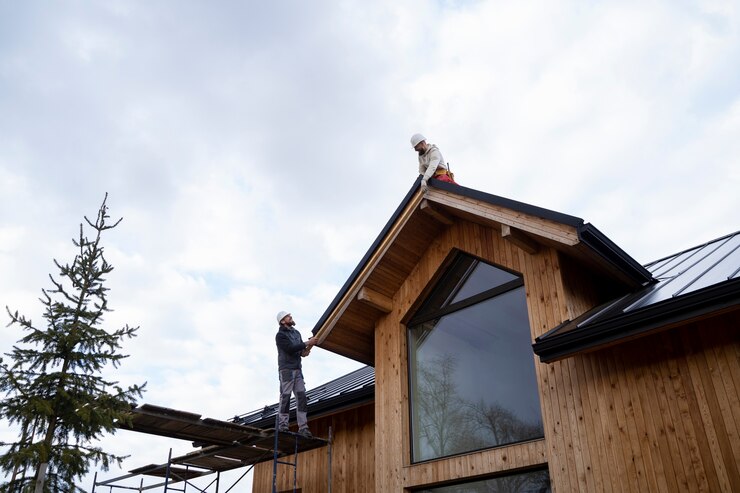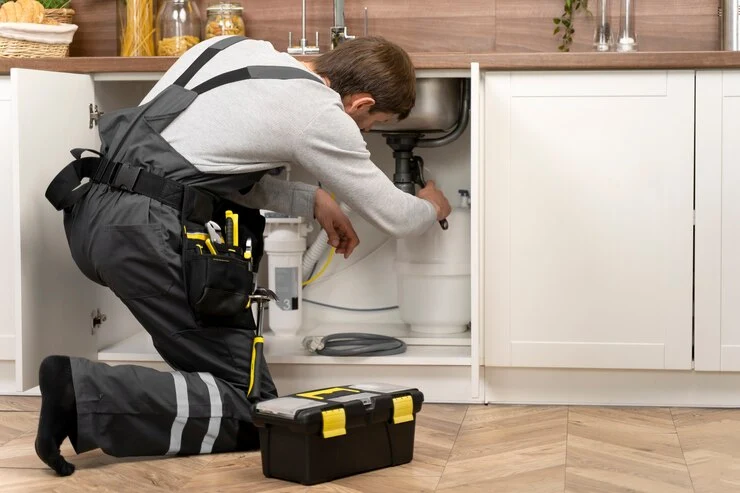Having a broken garage door spring is a huge inconvenience. You can’t get your car out, you can’t get your stuff in, and you’re just generally stuck until it’s fixed. So what do you do?
If you’re lucky, then you may have a friend, colleague, or a family member who is experienced with the garage door spring repair in Chicago. If not, don’t worry—we’re here to help. This guide will walk you through the basics of repairing your garage door spring, from identifying the problem to fixing it yourself.
Explanation of Garage Door Springs
Garage door springs help the door open and close. They are under a lot of tension, so they need to be handled with care. If you’re not familiar with them, it’s best to call a professional.
If you do decide to try to fix them yourself, here’s a quick guide. There are two types of springs- torsion and extension. Torsion springs are located above the door, and extension springs are located below the door.
To fix a torsion spring, you’ll need to release the tension on it. To do this, insert a winding bar into the hole on the end of the spring and turn it clockwise. Once you’ve released the tension, use a ladder to get up to the spring and remove the winding bar.
Next, you’ll need to remove the old spring. To do this, disconnect the cables from each end and lift the spring up and out of the bracket. If it’s an extension spring, remove the hook from one end and pull it out of the other bracket.
Now that you have the old spring out, install the new one by doing everything in reverse. Make sure that you don’t let the garage door close on your fingers!
You May Also Like: Home Owners Guide to Standard Sliding Screen Door Sizes
Identifying Your Garage Door Spring Problem
Before you start trying to fix your garage door spring, you have to identify the problem. There are a few different types of garage door springs, and each one has its own problems.
The torsion spring is the most common type of garage door spring. It’s located above the door, and it’s responsible for lifting the door. The extension spring is located on the side of the door, and it helps to open and close the door. The cable spring is the least common type of spring, and it’s located in the middle of the door.
Each type of spring has its own set of problems. Torsion springs can break or snap if they’re overloaded. Extension springs can wear out and break if they’re not kept well-lubricated. And cable springs can snap if they’re over-stretched.
The Tools You Will Need for a Chicago Garage Door Spring Repair
Assuming you have the necessary tools, the first step of a garage door spring repair is to disconnect the opener. This can be done by removing the cover panel on the opener and pulling out the red release cord. Once this is done, you will have to disconnect the cables from the wall.
The second step is to remove the tension on the spring. This can be done with a winding bar. Insert it into the hole on one end of the spring and turn it counterclockwise. You will feel tension release as you do this. Once the tension is released, you can remove the winding bar and then remove the spring.
The third step is to install the new spring. This is done by following these same steps in reverse. Be sure to reconnect the cables to the wall before you replace the cover panel on the opener.
How to Safely Replace Garage Door Springs in Chicago
When replacing garage door springs in Chicago yourself, it’s important to take precautions for your own safety. A typical garage door torsion spring can exert more than 550 pounds of force. This is enough to cause injury or death if the proper safety protocols are not followed.
To replace a garage door spring, start by releasing the tension first. Use an adjustable wrench and a pair of pliers or channel locks to loosen the set screws on the cable drum and the end bearing plate. Then, remove the winding cone and unwind the old spring with a winding bar. It’s important to use two winding bars so that you can keep it steady while you are working.
Once you have removed the old spring, it is recommended that you replace both springs at once so that they last as long as possible – but if this is not an option, be sure to use a spring that matches specifications with your existing spring (length, diameter and wire size). Once you have selected and installed your new torsion springs, reconnect all parts using manufacturer-approved parts and use lubricant where necessary. Finally, test the springs for balance and make any necessary adjustments before closing it back up again.
Professional Tips for Maintaining Your Garage Door Springs in Chicago
Taking a few extra steps to maintain your garage door springs in Chicago can help you avoid costly repairs down the line. Here are some top tips from experts:
– Make sure to lubricate all parts of your garage door, including the springs, chains, cables, pulleys, and hinges. This will help minimize friction and extend the life of the spring.
– Check the balance of the door regularly by lifting it manually halfway and then releasing it. If it doesn’t stay in place, then you likely need to adjust or replace your springs.
– Check for wear and tear periodically by inspecting each spring, cable and chain for any signs of cracking or rusting. Replace any damaged parts immediately.
– Avoid letting your kids play with the springs as they can easily get hurt or cause damage if not handled properly.
By taking these small but important steps to maintain your garage door springs in Chicago, you’ll avoid having to pay more money for repairs in the long run. Good luck!
Conclusion
So, if you’re in need of a garage door spring repair in Chicago, be sure to give our experts a call. We’ll be more than happy to help get your door back up and running in no time!




